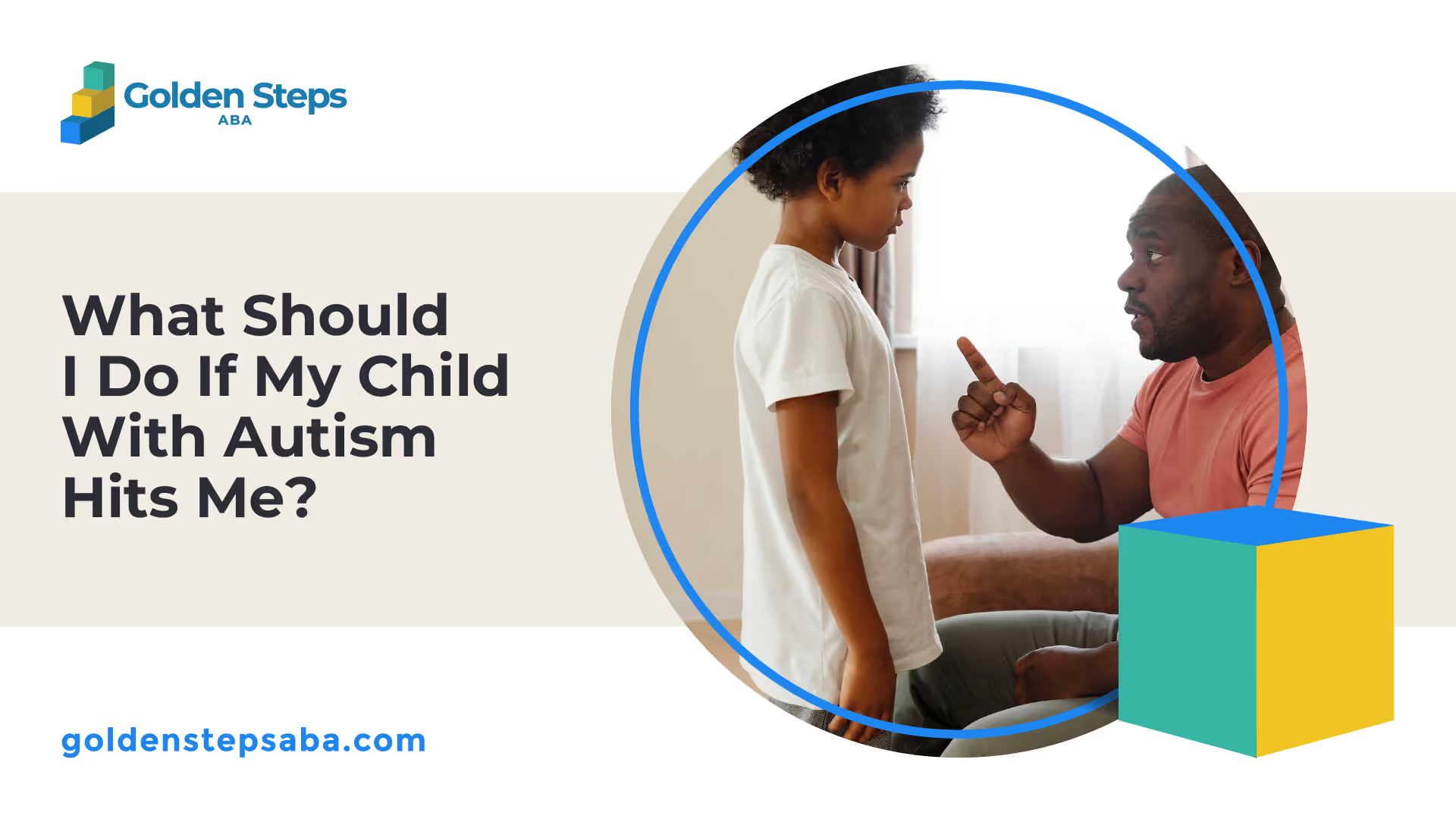Understanding Aggressive Behavior in Children with Autism
Aggressive behavior in children with autism is a complex issue that requires a nuanced understanding. As we know, children with autism may have difficulty expressing their needs and wants, which can lead to frustration and anger.

This lack of communication can be incredibly frustrating for the child and can cause them to act out in ways that may seem aggressive or violent.
Moreover, children with autism may experience sensory overload, which can cause them to feel overwhelmed and lead to a meltdown. For instance, a child with autism may struggle with loud noises, bright lights, or certain textures. These seemingly small stimuli can be incredibly distressing for the child, leading to a meltdown.
It is important to understand that this behavior is not intentional or malicious. Children with autism are not trying to be difficult or aggressive; rather, their behavior is a result of their unique neurological makeup.
Therefore, it is crucial that we approach these situations with empathy and understanding, and work to create a supportive and accommodating environment for all children.
Responding to Aggressive Behavior
It is important to remember that responding to aggressive behavior with aggression is not effective and can escalate the situation. Instead, try the following strategies:
Remain Calm
Remain calm and speak in a soft, gentle tone. This can help deescalate the situation and prevent further aggression.
Identify Triggers
Identify what triggers your child’s aggressive behavior. Is it a certain noise, texture, or situation? Understanding your child’s triggers can help you anticipate and prevent meltdowns.
Provide Sensory Input
Provide your child with sensory input that they find calming. This could be a weighted blanket, sensory toys, or a calm-down corner.
Use Visual Supports
Visual supports, such as social stories or visual schedules, can help your child understand what is expected of them and reduce anxiety.
Teach Coping Skills
Teach your child coping skills, such as deep breathing or taking a break, to help them manage their emotions.
Seeking Professional Help
If your child’s aggressive behavior is interfering with their daily life, it may be helpful to seek professional help. Aggressive behavior in children can stem from a variety of underlying issues, such as anxiety, trauma, or developmental disorders.
A behavioral therapist can work with your child to identify the root cause of their aggression and develop coping skills and strategies for managing their behavior.
In addition to working with your child, a therapist can also work with you as a parent to develop a behavior plan and provide support. Parenting a child with aggressive behavior can be challenging and overwhelming, but with the right tools and support, you can help your child thrive.
Remember that seeking professional help is not a sign of weakness, but rather a proactive step towards improving your child's quality of life and well-being. Don't hesitate to reach out for help if you feel your child's aggression is becoming unmanageable.
Recognizing Early Warning Signs of Aggressive Behavior
Recognizing the early warning signs of aggressive behavior in children with autism can help prevent meltdowns and deescalate potentially dangerous situations. Some common early warning signs include:
- Increased irritability or restlessness
- Clenched fists or jaw
- Rapid breathing or heart rate
- Pacing or rocking back and forth
- Changes in vocalizations, such as louder or more rapid speech
It is important to pay attention to your child's body language and behaviors, as these can provide valuable cues about their emotional state. By recognizing these early warning signs, you can intervene before a meltdown occurs and help your child regulate their emotions.
If you notice any of these early warning signs, try using some of the strategies mentioned earlier to deescalate the situation. For example, providing sensory input or using visual supports may help calm your child down before they become too overwhelmed.
Remember that every child with autism is unique, and what works for one child may not work for another. It may take some trial and error to find the right strategies for managing your child's aggressive behavior. Be patient with yourself and your child, and don't hesitate to reach out for professional help if needed.
Understanding how Medication can Affect Aggressive Behavior in Children with Autism
Medication can be an effective tool for managing aggressive behavior in children with autism. However, it is important to understand that medication is not a cure-all solution and should be used in conjunction with other behavioral therapies.
There are several medications that may be prescribed to children with autism who exhibit aggressive behavior. These medications include antipsychotics, mood stabilizers, and stimulants.
Antipsychotics may be prescribed to reduce aggression and irritability, while mood stabilizers can help regulate mood swings and prevent meltdowns. Stimulants may also be prescribed to improve focus and reduce impulsivity.
It is important to note that medication affects every child differently, and some children may experience side effects such as drowsiness, weight gain, or tremors. Therefore, it is crucial that parents work closely with their child's doctor to monitor any potential side effects and adjust the dosage or medication as needed.
Moreover, medication should always be used in conjunction with other behavioral therapies such as cognitive-behavioral therapy (CBT) or applied behavior analysis (ABA). These therapies can help teach children coping skills and alternative behaviors for managing their emotions.
In summary, medication can be a helpful tool for managing aggressive behavior in children with autism when used under the guidance of a healthcare professional. It is important to remember that medication alone is not enough and should be used in conjunction with other therapies for best results.
Strategies for Calming a Child During a Meltdown
When a child with autism is experiencing a meltdown, it can be difficult to know what to do. Here are some strategies that may help:
- Remain calm and speak in a soft, gentle tone. This can help deescalate the situation and prevent further aggression.
- Remove your child from the situation if possible. If your child is overwhelmed by sensory stimuli, try moving them to a quieter or less crowded area.
- Provide deep pressure input, such as a weighted blanket or tight hug. This can help regulate your child's nervous system and provide a sense of comfort.
- Use calming sensory toys, such as fidget spinners or stress balls. These can provide an outlet for your child's anxiety and distract them from their distress.
- Offer your child a preferred activity or item, such as a favorite toy or book. This can help redirect their attention and calm them down.
Remember that every child with autism is unique, and what works for one child may not work for another. It may take some trial and error to find the right strategies for calming your child during a meltdown. Be patient with yourself and your child, and don't hesitate to seek professional help if needed.
Tips for Creating a Safe Environment to Prevent Aggressive Behavior
Creating a safe environment can go a long way in preventing aggressive behavior in children with autism. Here are some tips for creating a safe and supportive environment for your child:
Reduce Sensory Overload
Sensory overload can be a major trigger for aggressive behavior in children with autism. Therefore, it is important to reduce sensory overload as much as possible. Some strategies include:
- Using noise-cancelling headphones or earplugs to block out loud sounds
- Dimming lights or using soft lighting to reduce bright light
- Avoiding scratchy or uncomfortable clothing
- Creating a calm and quiet space where your child can retreat when feeling overwhelmed
Establish Routines and Predictability
Establishing routines and predictability can help reduce anxiety and prevent meltdowns. Some strategies include:
- Creating a visual schedule that outlines your child's daily activities
- Maintaining consistent meal times, bedtimes, and wake-up times
- Providing advance notice of any changes in routine or schedule
Use Positive Reinforcement
Positive reinforcement can be an effective tool for encouraging positive behaviors and reducing aggressive behavior. Some strategies include:
- Praising your child when they exhibit positive behaviors such as sharing or taking turns
- Offering rewards such as stickers or small treats for good behavior
- Providing opportunities for preferred activities such as playing with toys or watching TV after exhibiting positive behaviors.
By implementing these strategies, you can create a safe and supportive environment that promotes positive behaviors and reduces the likelihood of aggressive behavior in children with autism.
Importance of Consistency in Responding to Aggressive Behavior
Consistency is key when it comes to responding to aggressive behavior in children with autism. It is important that all caregivers, including parents, teachers, and therapists, respond to aggressive behavior in a consistent manner.
This helps the child understand what behaviors are acceptable and what consequences they can expect if they engage in aggressive behavior.
In addition, it is crucial that the same strategies for managing aggressive behavior are used across different environments. For example, if a child learns that hitting is not allowed at home but is allowed at school or therapy sessions, this can be confusing and lead to inconsistent behavior.
Therefore, it is important for all caregivers to work together to develop a unified plan for managing aggressive behavior. This plan should include clear expectations for behavior and consequences for engaging in aggressive behavior.
By working together and staying consistent across different environments, caregivers can help promote positive behaviors and reduce the likelihood of aggressive behavior in children with autism.
Remember that consistency takes time and effort but can have a significant impact on your child's well-being. Don't hesitate to reach out for support from other caregivers or professionals if you need help developing a consistent plan for managing your child's aggressive behavior.
FAQs
What can I do to prevent my child with autism from hitting me?
Preventing aggressive behavior in children with autism requires a multi-faceted approach. It is important to identify triggers that may lead to aggressive behavior and work to minimize them as much as possible.
Additionally, providing sensory input that the child finds calming, using visual supports, and teaching coping skills can all be helpful in preventing meltdowns and reducing the likelihood of hitting or other aggressive behaviors.
Is it ever okay to physically restrain my child during a meltdown?
Physical restraint should only be used as a last resort when a child's safety is at risk. If you need to physically restrain your child during a meltdown, use the least amount of force necessary and only for as long as necessary to ensure everyone's safety.
It is important to remember that physical restraint can be traumatizing for both the child and the caregiver, so it should only be used in extreme cases where there are no other options.
How can I help my other children feel safe when their sibling with autism hits them?
It is important to provide support and understanding for siblings of children with autism who may experience aggression from their sibling. This can include setting clear boundaries around what behaviors are acceptable and not acceptable, offering emotional support and validation for their feelings, and providing opportunities for one-on-one time with each child.
Additionally, family therapy or support groups can be helpful in navigating these complex dynamics within the family unit.
Conclusion
Aggressive behavior in children with autism can be challenging to manage, but it is important to remember that it is not intentional or malicious. Understanding your child’s triggers and providing sensory input and coping skills can help prevent meltdowns and aggressive behavior.
If your child’s behavior is interfering with their daily life, seeking professional help may be beneficial. Remember to remain calm and patient, and seek support when needed.

